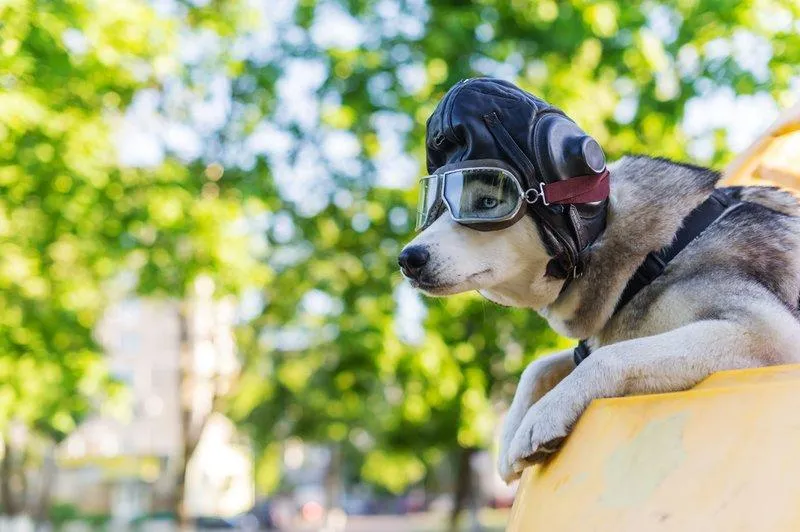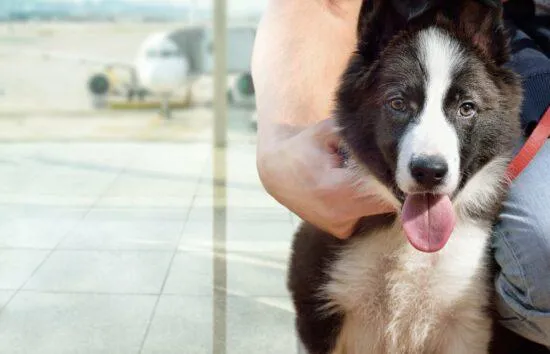Can I Fly With a Big Dog? Answers to Your Questions About Air Travel With Larger Dog Breeds
If you have a large or giant dog breed, you may wonder whether it’s possible to take your furry friend along when flying. The short answer is that yes, it is allowed—but there are some important things to know first.
Can All Airlines Accommodate Big Dogs?
While regulations permit dogs to travel in aircraft cabins, individual airline policies on size limits can vary. Most major carriers in the U.S. allow dogs under 20 pounds to ride in the cabin with you for a fee. For larger dogs over 20 pounds:
- Some airlines only accept dogs up to a certain weight, such as 50 or 70 pounds, when traveling in approved kennels that fit under the seat.
- Other carriers may make exceptions on a case-by-case basis for dogs slightly over the weight limit if the kennel fits in the allotted space.
- You can also check if your airline offers cargo transport for dogs over a certain size, but this usually has additional rules and restrictions.
It’s important to contact the airline well in advance to find out their dog policies and size limits. Make sure your pup falls under the specifications before purchasing tickets. From my experience, larger carriers like Delta and American tend to have more flexible rules overall for travel with bigger dogs.
What Size Kennel Is Required?
To fly in the cabin, all dogs, regardless of size, must be contained in an International Air Transport Association (IATA)-approved soft-sided kennel that fits completely under the seat in front of you. The kennel must be big enough for your dog to stand up, turn around, and lie down comfortably.
For most large breeds, a kennel measuring approximately 19x13x9 inches or 20x16x11 inches works well. Make sure to measure your pup and practice getting them in and out of the kennel before your flight to avoid stress or anxious behavior at the airport. Additionally, the kennel should be properly labeled with identification like your contact information.

What Paperwork Is Required?
In addition to following airline rules, you’ll need to meet TSA and import regulations when flying between countries. Common paperwork includes:
- A health certificate from your vet stating your dog is free of communicable diseases and has received all necessary vaccinations.
- Proof of current rabies vaccination on an official tag or microchip.
- If traveling internationally, a veterinary entry permit or import license may also be required by the destination country.
It’s a good idea to have copies of all documents with you in case an agent needs to review them. Organizing records ahead of time will make checking in and security go smoothly.
What About Fees?
Most airlines charge an additional transport fee per kennel that depends on flight length and ranges from $100-250 each way. You may also have to pay checked baggage fees, so it’s wise to price out costs before booking. Make sure to account for any additional food, toys, blankets, and supplies your doggo will need for the trip duration in your carry-on.
While expenses add up, being prepared is key to having a stress-free flying experience with your fur baby. From my experience, it’s totally worth it to keep Fido by your side versus leaving him behind or riding cargo!
What About Travel Stress?
Even for seasoned fliers, flying can induce anxiety in pups not used to it. Here are some tips I’ve found helpful to ease travel stress:

- Carefully crate train your dog in advance using positive reinforcement.
- Bring familiar toys or blankets with your scent for comfort.
- Give calming supplements or medications as recommended by your vet.
- Request a window or aisle seat to soothe your pup with pets.
- Speak calmly and avoid anxious energy that can rub off on dogs.
Taking test runs to the airport, running errands in the kennel, and associating it with happy things like treats, can also boost your pup’s confidence. With preparation, even bigger breeds can often adapt to flying with minimal stress.
Can I Fly Internationally With My Large Dog?
Yes, it’s definitely possible to include your large furball when traveling abroad—but international regulations are more complex. Each country has its own import rules regarding pets. You’ll need to:
- Research destination country pet entry requirements months ahead including paperwork like health certificates and import permits.
- Consider quarantine policies if traveling to certain areas like Australia or China.
- Contact your vet to schedule any required exams, tests, or vaccines well in advance of travel dates.
- Coordinate multi-leg flights through the same airline when possible for smoother connections.
With diligent planning, your Great Dane, Mastiff, or other giant breed can go places too. The extra effort is worth creating lifelong memories with your loyal companion by your side.
In summary, flying with bigger dogs is perfectly doable if you follow airline rules, prepare paperwork, take stress-reducing steps, and allow extra time. With the right kennel, training, supplies, and documentation—Goldens, Labs, and more can absolutely tag along on your next family vacation adventure!
I hope this gives you some helpful insight into successfully transporting your big baby via plane. Feel free to reach out if you have any other questions! Safe and happy travels to you and your pup.

Flying with your big dog: What you need to know
| Airline | Size Restrictions | Crate Requirements | Advance Notice |
|---|---|---|---|
| American Airlines | Dogs must fit on owner’s lap or under the seat | Approved soft-sided or hard kennels required | At least 48 hours before departure |
| Delta | Dogs must fit under the seat or in a kennel that fits under the seat | Approved hard-sided kennels required | At least 24 hours before departure |
| United | Dogs must fit on owner’s lap or under the seat | Approved soft-sided or hard kennels required | At least 6 hours before departure |
| Alaska Airlines | Maximum kennel size is 18″ L x 14″ W x 9″ H | Approved hard-sided kennels required | At least one day before departure |
| JetBlue | Maximum kennel size is 18″ L x 14″ W x 8″ H | Approved hard kennels required | At time of booking |
FAQ
-
Can I bring my big dog on a plane as a carry-on?
Most airlines allow dogs to fly as carry-on, but they have size limits. Your dog must fit comfortably in a carrier that can fit under the seat in front of you. Measure your dog’s kennel to make sure it meets the requirements. Some airlines only accept small and medium dogs as carry-on. Check with your specific airline for their pet policies.
-
Will my large dog be okay in the cargo hold?
While some big dogs fly in the cargo hold, it’s basically not the most comfortable for them. Down below, it’s much louder and they can’t see you. The changes in air pressure can possibly hurt their ears, too. If possible, it’s better to check other options before checking Fido.
-
Can I buy an extra seat for my big pup?
Yes, you can purchase an extra plane ticket for your furry friend to have their own seat. However, not all airlines allow this. You’ll need to contact the airline directly to check pricing and restrictions. They may require the dog to have specific training and fit in their own FAA-approved carrier under the seat in front of them.
-
Is it challenging to travel by car with a large dog?
Road trips with heavy dogs can be quite tiresome. Your pup may need lots of pit stops for bathroom breaks, exercise, and fresh water. Big breeds like labs and great danes will require larger crates or being harnessed in the back. Nevertheless, driving allows you to stop when you and your pup are ready. Some find it worth it for the companionship!
-
Are there other ground transportation options?
Yes, you can consider flying your dog as cargo on a plane and picking them up at the destination airport. This allows them to ride in a pressurized cargo hold. Greyhound bus lines and Amtrak also transport dogs, though capacities are limited. You might check into a professional pet transportation service too. They provide door-to-door animal relocation.

-
What is the safest way to travel with a large breed?
The safest option depends on your individual needs, but proper planning helps ensure a stress-free trip for all. Whenever possible, it’s best if your canine companion can see you for reassurance. Avoid putting them into confined spaces unnecessarily if they won’t fit comfortably. Don’t forget toys, food, documentation and their vaccination records!
